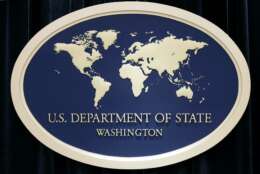Hiring/Retention
-
As the definition of a job in the field continues to grow and evolve, agencies like the FBI have been forced to get creative in how they're recruiting new cyber talent.
December 01, 2020 -
The Air Force will be lowering some of the bonuses it gives out as in-demand jobs are being filled.
December 01, 2020 -
The Army wants soldiers to be able to keep their career trajectory without compromising family plans.
November 25, 2020 -
House Democrats, good government groups and federal employee associations are urging congressional appropriators to include language blocking the president's Schedule F executive order in the next spending bill.
November 24, 2020 -
At 245 years old, the Army remains a fundamental unit of national security. But it must modernize to many changes and technology and in the world threat situation.
November 24, 2020 -
Some agencies have outgrown their formal telework policies in the pandemic, and they're using full-time remote work arrangements to entice new employees and retain existing ones.
November 18, 2020 -
A year-long study by the Defense Health Board suggests the Pentagon is not providing proper medical care to women, wasting money and hurting retention and readiness.
November 16, 2020 -
The Navy demonstrably accelerated shipyard maintenence in 2020, but still won't meet its goal of zero delays in 2021.
November 13, 2020 -
The agency earlier this year outlined a strategy to Congress to address these longstanding diversity and inclusion challenges, but an executive order from President Donald Trump put these plans on hold.
November 12, 2020 -
The Army is using machine learning to build a retention prediction model, which determines the likelihood of personnel staying in the service.
November 11, 2020 -
Mike Sydla, the division director for Information Management Resources at Naval Sea Systems Command’s Industrial Operations, said the coronavirus pandemic helped accelerate some parts of the IT modernization journey.
November 05, 2020 -
Don Kettl, a professor at the LBJ School of Public Affairs at the University of Texas, offered his take on the most important administrative and governance topics ahead.
November 05, 2020 -
Federal unions, many good government groups and much of the media have attacked President Trump's proposal to make it easy to fire hundreds --if not thousands--of career feds now protected by civil service rules.
November 05, 2020 -
The debate over the Trump administration's order to create a new civil service Schedule F - most of it has focused on the effects on career employees. But what about the public?
November 04, 2020 -
Just how big is the federal government? If you count contractors and grantees, it ranges from 9 million people to more than 11 million.
November 03, 2020














